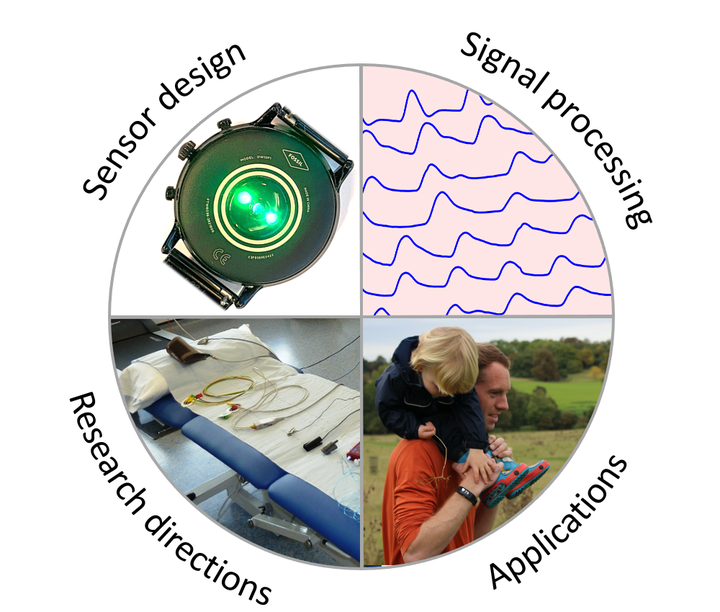 Image credit: P. Charlton et al. (CC BY 4.0)
Image credit: P. Charlton et al. (CC BY 4.0)
Abstract
Photoplethysmography is a key sensing technology which is used in wearable devices such as smartwatches and fitness trackers. Currently, photoplethysmography sensors are used to monitor physiological parameters including heart rate and heart rhythm, and to track activities like sleep and exercise. Yet, wearable photoplethysmography has potential to provide much more information on health and wellbeing, which could inform clinical decision making. This Roadmap outlines directions for research and development to realise the full potential of wearable photoplethysmography. Experts discuss key topics within the areas of sensor design, signal processing, clinical applications, and research directions. Their perspectives provide valuable guidance to researchers developing wearable photoplethysmography technology.
Further reading
The Roadmap itself contains plenty of reading. For a brief update on the field of wearable photoplethysmography in 2023, see this article, which describes further developments in the field not covered in the Roadmap, and provides reflections are provided on the process of co-ordinating a Roadmap article.
Resources for co-ordinating a Roadmap article
Resources used when co-ordinating the Roadmap article are available for future Roadmap co-ordinators here.